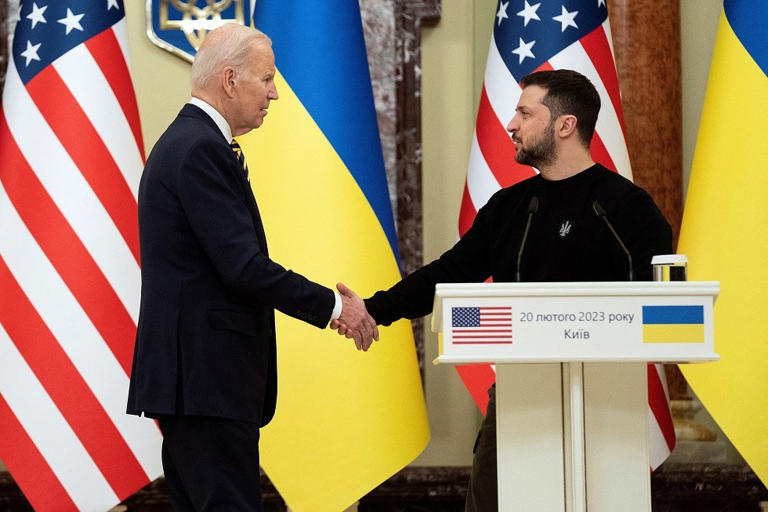How President Biden 'sent benefits' in $61 billion U.S. aid package for Ukraine
It's the $61 billion aid package the president just signed for Ukraine to bolster its military that has helped the Pentagon upgrade and modernize its arsenal in a way that wouldn't have been possible
Gold price today April 25, 2024: Gold price is complicated, gold bidding is dead due to this reason, learn to invest the billionaire's way? The new law would allow the Pentagon to send existing weapons - everything from bullets to missiles to tank parts - to Kiev and then at the same time, fill the gap left there with new production efforts for America's arsenal. According to research by the American Enterprise Institute (AEI), there are 117 production lines located in about 71 US cities set up to produce these weapon systems.
On the morning of April 25, after both houses of the US Congress passed the Bill on the new foreign aid package, President Joe Biden signed it into law. Military aid package worth $95 billion, including $61 billion for Ukraine, the rest in additional aid for Israel and the Indo-Pacific region, as well as a possible ban on TikTok in the US next year. Speaking to the press after signing the law, President Biden affirmed that aid shipments will "immediately begin in the next few hours." "We will immediately send equipment and weapons to Ukraine from our own stockpile, and then add to that stockpile new products produced by American companies in the United States," Mr. Biden clarified. . “We are helping Ukraine, but also investing in our own industrial base,” Mr. Biden added, saying the money would be divided equally across 40 states.
A researcher at AEI, Marc Thiessen, and his colleagues corrected the slightly lower number – 31 states – but agreed with President Biden that the effect from the above decision will be very significant. Writing in a recent commentary in the Washington Post, expert Thiessen said that it is "US military aid to Ukraine that is revitalizing manufacturing communities across America".
AEI has identified a range of regions – from Ohio to New Hampshire, Missouri to California – that will benefit most directly. Notably, many of these states are represented by lawmakers who voted against the above bill. Missouri, for example, is an area highlighted in deep red in AEI's data, with Boeing (BA) and RTX (formerly Raytheon) Corporation (RTX) making things like glide bombs and tracking radar. Likewise, Alabama is where companies like BAE Systems (BAESY), General Dynamics (GD) and Lockheed Martin (LMT) make things like combat vehicles, artillery parts and land rockets. Javelin air to air.
RTX is also operating in Alabama and recently broke ground on an expansion of its missile facility there. This week, Lockheed Martin and General Dynamics also announced quarterly earnings figures and did not forget to use these reports to promote their relationship with the Pentagon, as well as how international contracts work. How does the room help increase their profits? The US has now sent more than $100 billion to Ukraine in a series of aid efforts that follow a similar model - aid money "passes through" the US economy first and boosts the country's manufacturing industry.
Observers emphasized, "this money allows the Pentagon to upgrade and modernize the US arsenal in a way that would not have been possible". Center for Strategic and International Studies expert Mark Cancian recently wrote about how cutting aid would have other impacts, from underfunding existing US forces, to weaken humanitarian relief efforts. The aid measure passed this week also includes more than $26 billion for Israel. Some of that money is represented as military and weapons support and will likely follow the same pattern – benefiting American arms manufacturers (and their forces) first. ).










































